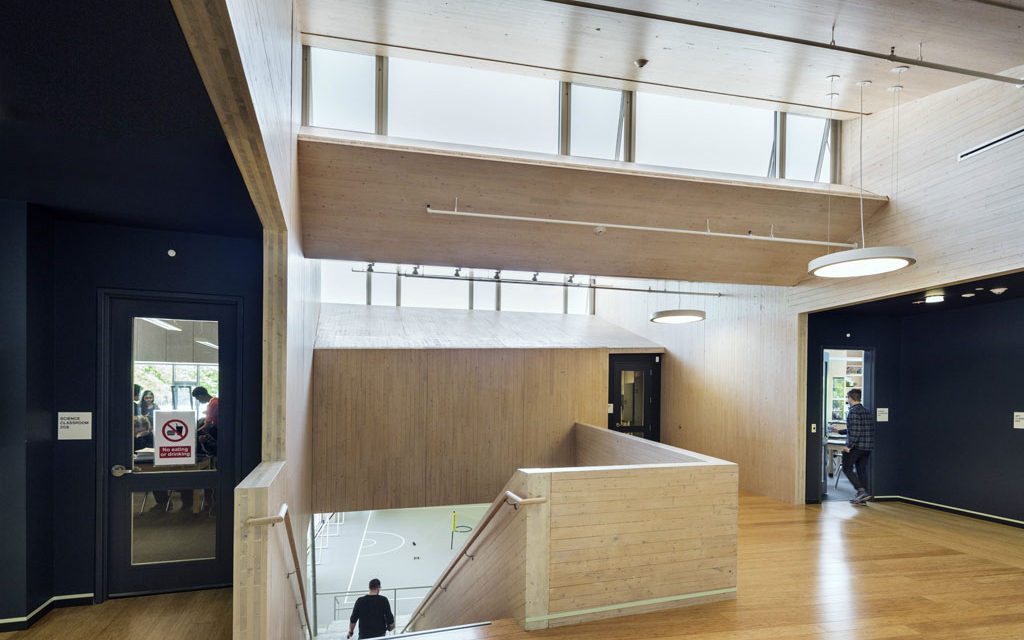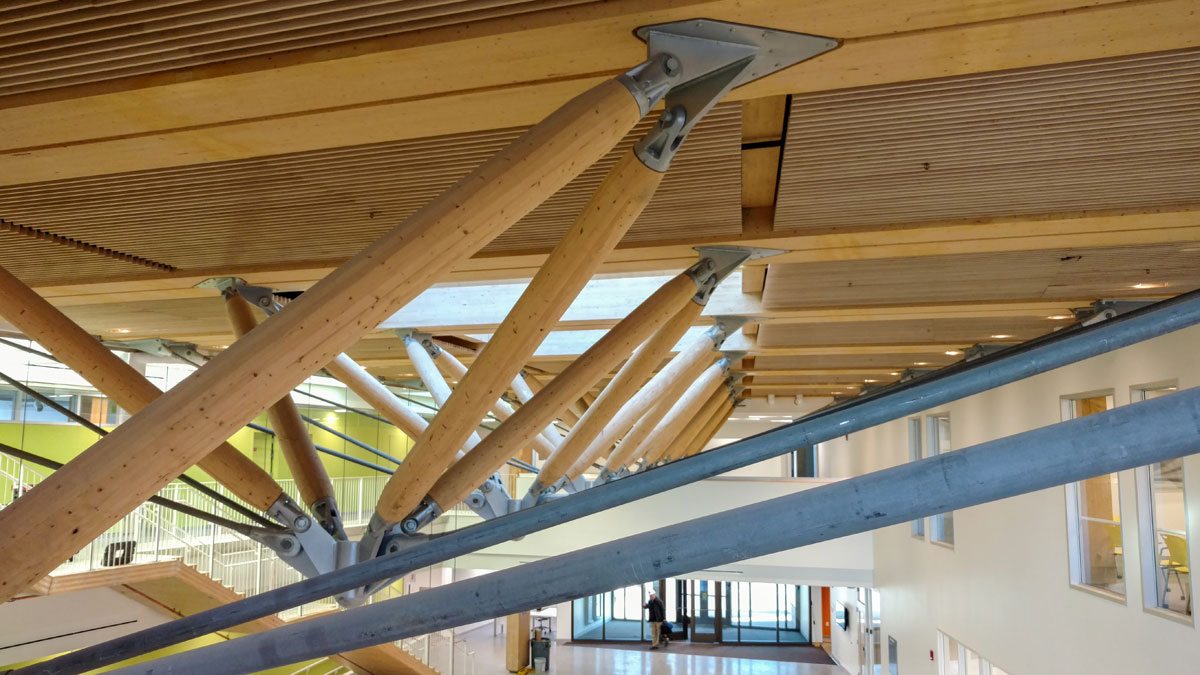Designing with wood ensures safe, resilient and appealing structures that are ideal for educational facilities
WASHINGTON, Jan. 30, 2017 /PRNewswire/ — An estimated $6.1 billion was spent on new school construction in 2015, a number that is expected to increase as U.S. schools look to accommodate an estimated 2.8 million more students by 2024. To meet this demand, education administrators need to select building material options that meet budget parameters and ensure the well-being of the structure’s occupants. Wood building solutions are an ideal option as they can meet budget and rigorous safety requirements, be erected quickly, and provide a lower carbon footprint than traditional building materials.
Optimal for educational and institutional building construction, wood building solutions typically cost less than alternatives – the average elementary and middle schools could realize cost savings of nearly 22 percent – and wood construction is fast, particularly with prefabrication and panelized products like cross-laminated timber and mass timber technologies. Wood structures meet rigorous safety and environmental performance requirements required for educational facilities and classrooms. For example, wood-frame schools are a prevalent option on the West Coast, where seismic and wind-resistant design challenges are an area of concern.
Wood building solutions are selected in university housing scenarios where cost, functionality and speed are paramount. “We have seen a very strong trend toward the use of wood in student housing,” says Beth Brett, project manager for Mahlum. “With the rising cost of construction, universities are looking to the use of wood in student housing to reduce costs and help manage their project budgets.”
As a renewable resource, wood offers a lower carbon footprint over other common building materials, and improved energy efficiency performance due to its inherent insulating qualities. Additionally, school designers and facility planners cite other attributes of wood as a motivating factor for its use, including a growing body of biophilic research that links the use of exposed wood to occupant well-being.
“From an environmental standpoint, a significant benefit of using mass timber as a primary structure—instead of steel or concrete with their relatively higher processing emissions— is its capacity to sequester carbon over the building’s lifetime,” says Alan Organschi, principal of Gray Organschi Architecture and designer of Common Ground High School in New Haven, Connecticut. “We estimate the project offsets 447 metric tons of carbon dioxide, or the equivalent of the annual emissions of 95 vehicles.”
reThink Wood provides information and educational resources on designing with wood in a variety of applications for building professionals. reThink Wood’s continuing education course, Designing Modern Wood Schools, offers AIA and GBCI credits and information on how designing with wood delivers high-performance, cost-effective educational facilities. Additional wood building resources are available at reThinkWood.com.
About reThink Wood
reThink Wood represents North America’s softwood lumber industry. We share a passion for wood and the forests it comes from. Our goal is to generate awareness and understanding of wood’s advantages in the built environment. Join the reThink Wood community to make a difference for the future. Be part of the conversation to “rethink” wood use, address misperceptions and enhance awareness of wood’s benefits and choices. Learn more at reThinkWood.com.






